[{1 1}]
2024-09-03
3434
Catalog

Figure 1: Frequency Modulation and FM Radio
What Is Frequency Modulation (FM)?
Frequency Modulation (FM) is a core technique in radio communication, where the frequency of a carrier wave is adjusted according to the amplitude of the incoming signal, which could be audio or data. This process creates a direct relationship between the amplitude of the modulating signal and the frequency changes in the carrier wave. These changes, called deviations, are measured in kilohertz (kHz). For example, a deviation of ±3 kHz means the carrier frequency moves 3 kHz above and below its central point, encoding the information within these shifts. Understanding deviation is solution to effectively using FM, especially in Very High Frequency (VHF) broadcasting, where frequencies range from 88.5 to 108 MHz. Here, large deviations, like ±75 kHz, are used to create Wide-Band FM (WBFM). This method is for transmitting high-fidelity audio, requiring a considerable bandwidth, typically around 200 kHz per channel. In crowded urban areas, managing this bandwidth is required to avoid interference between channels.
In contrast, Narrow-Band FM (NBFM) is used when bandwidth is limited, as in mobile radio communications. NBFM works with smaller deviations, around ±3 kHz, and can operate within narrower bandwidths, sometimes as small as 10 kHz. This approach is ideal when the priority is stable and reliable communication rather than high audio fidelity. For instance, in law enforcement or emergency services, NBFM ensures stability, even in urban settings with many physical barriers like buildings and tunnels. The narrower bandwidth also allows for more channels to coexist within a limited spectrum, requiring careful management of channel assignments and spectrum utilization to maintain communication clarity.
Frequency Demodulation Process

Figure 2: Frequency Demodulation
Frequency demodulation is implemented in radio communication, ensuring that the original signal is accurately retrieved from a frequency-modulated carrier wave. This process converts frequency variations of the incoming signal into corresponding amplitude variations, mirroring the original signal, whether audio or data, for further amplification. Devices used for this task, such as FM demodulators, detectors, or discriminators, are designed to convert frequency shifts back into amplitude changes while preserving signal fidelity. The choice of demodulator depends on the need for precision, bandwidth efficiency, and the specific operating environment. Technically, demodulation starts when the signal is received by the antenna and isolated from surrounding noise or nearby signals using a tuner. This step is required because any residual noise can degrade demodulation accuracy. The isolated signal then passes through the demodulator, where frequency variations are translated into voltage variations that directly correspond to the original signal’s amplitude.
In data communication, where even minor errors can lead to data loss or corruption, the stakes are higher. The demodulated signal typically feeds into a digital interface, where it is processed by microcontrollers or computers. Environments that require high data integrity, such as financial transactions or air traffic control, rely on demodulators capable of handling rapid frequency changes with minimal distortion. Advanced error-checking protocols and real-time monitoring systems are often employed to detect and correct potential issues immediately, making robust demodulation technology ensuring timely data transmission.
FM Modulators
Generating frequency-modulated (FM) signals involves various techniques, each tailored to specific operational needs. The choice of modulation technique affects the performance and reliability of communication systems.
Varactor Diode Oscillator:

Figure 3: Varactor Diode Oscillator for Generating FM Signals
A common method for generating FM signals is using a varactor diode within an oscillator circuit. The capacitance of the varactor diode changes with applied voltage, directly altering the oscillator’s frequency. This method is effective for generating Narrow-Band FM (NBFM) signals. It is ideal for portable communication devices where space and power are limited. However, this simplicity has trade-offs, including limited frequency stability and precision. Therefore, this is less suitable for applications that demand high fidelity or Wide-Band FM (WBFM).
Phase-Locked Loops:

Figure 4: Phase-Locked Loops System
For applications requiring more precise frequency modulation, Phase-Locked Loops (PLLs) are often preferred. PLLs provide accurate frequency control, making them ideal for environments where signal integrity is required. A PLL locks the oscillator frequency to an input signal, ensuring stability over time, ideal in high-fidelity broadcasting where even minor frequency deviations can degrade audio quality. PLL-based modulators are used in systems that require strict adherence to frequency standards, such as professional broadcast stations or air traffic control systems. However, implementing PLLs poses challenges. The parameters of the PLL loop must be carefully managed to ensure optimal performance. For example, the loop bandwidth must be wide enough to track input signal variations accurately but narrow enough to filter out noise and unwanted frequencies. Achieving this balance often requires iterative tuning and testing, with operators using specialized equipment to measure and adjust loop parameters in real-time.
Advantages and Disadvantages
FM Advantages
Frequency Modulation (FM) offers numerous advantages, particularly in maintaining signal clarity and reliability. One major benefit is FM's resilience to noise and signal strength variations. Unlike Amplitude Modulation (AM), where noise affects signal quality by altering amplitude, FM encodes information through frequency changes. This approach makes FM less susceptible to amplitude-related disturbances, provided the signal strength remains above a certain threshold. This robustness is particularly advantageous in mobile communications, where signal strength can vary as the receiver moves through different environments, such as urban areas or forests. FM's ability to maintain clear communication despite changing conditions is ideal in these settings. For instance, in vehicular communication systems, FM ensures uninterrupted communication between drivers and dispatch centers, even when moving through areas with varying signal strengths. FM's immunity to noise also makes it perfect for high-quality broadcasts, filtering out environmental noise that often affects amplitude.
Another advantage of FM is its compatibility with non-linear Radio Frequency (RF) amplifiers. FM allows modulation at a lower power stage, enabling the use of efficient non-linear amplifiers that boost the signal without major distortion. This efficiency is particularly beneficial in portable applications. For instance, in handheld radios used by field personnel, using less power-hungry amplifiers can extend operational time, ideal during extended operations in remote locations.
FM Disadvantages
Despite its advantages, Frequency Modulation (FM) has limitations. One primary drawback is its lower spectral efficiency compared to other modulation techniques, such as Phase Modulation (PM) and Quadrature Amplitude Modulation (QAM). FM typically requires more bandwidth to achieve the same data rates, making it less suitable for data-intensive applications, particularly in environments with limited bandwidth.
Another disadvantage is the complexity and cost associated with FM demodulators, which must accurately convert frequency variations into amplitude changes. This process requires sophisticated circuitry and precision components, making FM systems more expensive to implement and maintain than AM systems. What's more, FM signals generate sidebands that theoretically extend infinitely, occupying major bandwidth, especially in Wide-Band FM (WBFM) applications. Managing this bandwidth requires precise filtering to prevent signal degradation. Poorly designed filters can lead to signal quality issues, particularly in environments where multiple FM signals are transmitted close together.
FM History and Development
The introduction of Frequency Modulation (FM) marked an outstanding shift in radio technology, aimed at reducing static interference and improving signal clarity. In the early days of radio, static was a major problem, particularly with Amplitude Modulation (AM). AM systems were highly susceptible to noise, as they encoded information through variations in amplitude. Environmental factors like electrical storms and power lines could easily distort these signals.
In 1928, American engineer Edwin Armstrong began exploring FM as a way to reduce static without sacrificing bandwidth. Unlike AM, FM encodes information through frequency changes, making it less vulnerable to static and noise. Armstrong’s approach was revolutionary, challenging the belief that reducing bandwidth was the only way to improve signal quality. He demonstrated that by increasing the bandwidth, FM could deliver superior sound quality with less noise, even in challenging environments. Despite skepticism from industry experts, Armstrong was determined to prove FM’s effectiveness. In 1939, he launched his own FM radio station to showcase the technology’s advantages. The station operated on a frequency band between 42 and 50 MHz, demonstrating FM’s superior sound quality and resistance to static.
The success of Armstrong’s station led to broader acceptance of FM, and the Federal Communications Commission (FCC) eventually expanded the FM band to 88-108 MHz, facilitating widespread adoption. This transition was not without challenges, as existing FM receivers became obsolete, requiring manufacturers to redesign and consumers to upgrade their equipment. Ultimately, FM’s advantages in sound quality, interference resistance, and reliability outweighed the initial difficulties, establishing it as the standard for high-quality broadcasting and mobile communication.
Modulation Index & Deviation Ratio
In Frequency Modulation (FM), the modulation index and deviation ratio are valued parameters that directly impact system performance, from signal clarity to spectrum efficiency.
The modulation index measures the frequency variation relative to the modulating signal's frequency, determining whether a signal is Narrow-Band FM (NBFM) or Wide-Band FM (WBFM). In professional broadcasting, where WBFM is standard, engineers must carefully calculate the modulation index to ensure that the signal stays within its designated bandwidth. This process involves continuous monitoring and adjustment, often using real-time spectrum analyzers to maintain the right balance between audio fidelity and regulatory bandwidth limits.
The deviation ratio, which is the ratio of the maximum frequency deviation to the highest modulating signal frequency, also plays a major role. In WBFM systems, a high deviation ratio is required for superior audio quality but demands broader receiver bandwidth and advanced filtering to prevent distortion. Conversely, in NBFM applications, a lower deviation ratio allows for tighter channel spacing, making more efficient use of the spectrum—ideal in communication systems like emergency services. Setting and maintaining the correct modulation index and deviation ratio is a delicate task. In high-stakes environments such as air traffic control, technicians must ensure these parameters are perfectly tuned to avoid interference and ensure clear communication.
Frequency Modulation Bandwidth

Figure 5: FM Bandwidth
FM bandwidth is a core factor that affects both the quality and efficiency of communication systems. It is primarily determined by the frequency deviation and the modulating signal’s frequency, creating sidebands on either side of the carrier. While these sidebands extend infinitely in theory, their intensity decreases further from the carrier, allowing engineers to limit bandwidth without compromising quality. In high-fidelity audio broadcasting, FM's wide bandwidth supports superior sound quality, capturing the distinction of music and speech. Broadcast engineers must balance sound quality with spectrum allocation, ensuring each channel operates within its bandwidth without interfering with adjacent frequencies.
Conversely, Narrow-Band FM (NBFM) is used in two-way radio communications to conserve bandwidth. Here, the goal is clear communication across multiple channels in a limited spectrum. NBFM’s reduced bandwidth allows tighter channel spacing for emergency services applications. Effective FM bandwidth management is ideal, particularly in densely populated areas with many radio stations. Engineers must meticulously control bandwidth to prevent signal overlap and maintain clear transmissions, often using advanced filtering and dynamic spectrum management.
Application of Frequency Modulation
Frequency Modulation (FM) is widely used across various fields due to its noise immunity and signal clarity. Here are some major applications:
• Radio Broadcasting: FM is the standard for broadcasting music and speech, offering high-fidelity sound with minimal interference. Broadcast engineers must continuously calibrate FM transmitters to balance audio quality and bandwidth efficiency, particularly in urban areas with heavy spectrum use.
• Radar Systems: FM enhances signal clarity in radar, perfect for accurate detection and tracking. Operators must fine-tune frequency deviation parameters to optimize radar resolution and range, ideal in applications like air traffic control and military surveillance.
• Seismic Prospecting: FM is used to explore underground geological formations, providing detailed data for industries like oil and gas. The clarity of FM-modulated signals is required for accurately mapping subterranean structures, reducing the risk of costly drilling errors.
• Electroencephalography (EEG): In medical diagnostics, FM ensures accurate transmission of brain activity signals in EEG tests. Technicians must carefully manage FM parameters to avoid distortion, ensuring precise readings for conditions like epilepsy and brain injuries.
Difference Between FM and AM
|
Aspect |
Frequency Modulation (FM) |
Amplitude Modulation (AM) |
|
Sound Quality |
Superior sound quality with less
susceptibility to noise. |
Generally lower sound quality due to
susceptibility to noise and interference. |
|
System Cost |
More costly due to the complexity of the
modulation and demodulation process. |
Typically less expensive to implement
because of simpler modulation and demodulation circuits. |
|
Transmission Range |
May be blocked by physical obstacles,
limiting effective range. |
Can be transmitted over longer distances,
making it ideal for long-range communication. |
|
Power Efficiency |
More power-efficient, ideal for portable
and battery-operated devices. |
Less power-efficient, requiring more
energy for effective signal transmission, especially over long distances. |
|
Broadcast Range |
Longer effective broadcast range for
maintaining high-fidelity audio, particularly in line-of-sight conditions. |
Shorter broadcast range for high-quality
audio; often requires repeaters or relays for extended coverage. |
|
Modulation Technique |
Modulates the frequency of the carrier
signal, providing better noise immunity. |
Modulates the amplitude of the carrier
signal, making it more susceptible to amplitude-related noise and
interference. |
|
Demodulation Complexity |
More complex, requiring sophisticated
technology for accurate signal reproduction. |
Relatively straightforward, with simple
circuitry sufficient for signal demodulation. |
Conclusion
In the ever-evolving landscape of communication technology, Frequency Modulation stands out as a resilient method, ensuring clarity and reliability across various platforms. From the precision required in FM demodulation to the strategic choices involved in selecting modulation techniques, FM's role is required in delivering high-quality audio, secure data transmissions, and efficient use of the radio spectrum. As we continue to rely on FM for everything from radio broadcasting to emergency services, understanding its complexities not only enhances our appreciation of this technology but also equips us to optimize its use in an increasingly connected world.
 FAATATAU IA TATOU
Tagata faamalieina i taimi uma.Agaalofa ma le talitonuina ma fiafia masani.
FAATATAU IA TATOU
Tagata faamalieina i taimi uma.Agaalofa ma le talitonuina ma fiafia masani.
suʻega suʻega.O oloa aupito pito sili ona maualuga tau ma le tautua sili o lo tatou tautinoga faavavau.
![[{1 1}]](/upfile/blog/small_2024090318235661431.jpg) [{1 1}]
[{1 1}]
2024-09-03
![[{1 1}]](/upfile/blog/small_2024090310442537131.jpg) [{1 1}]
[{1 1}]
2024-09-03
E masani ona fesiligia fesili [FAQ]
1. What is the best FM frequency to use?
The best FM frequency to use depends on the specific application and environment. In commercial broadcasting, the FM band typically ranges from 88.1 to 107.9 MHz in most countries, with specific frequencies allocated to avoid interference. The optimal frequency within this range is one that minimizes interference from other stations and environmental noise while providing clear coverage to the target audience. Broadcast engineers conduct thorough frequency analysis, considering factors like local signal congestion and terrain, to select the most suitable frequency for reliable transmission.
2. Which is better, AM or FM?
FM is generally better than AM for applications requiring high sound quality and noise resistance, such as music broadcasting. FM's modulation technique, which encodes information in frequency changes, is less susceptible to noise and interference that often distort AM signals, which vary in amplitude. However, AM can be better for long-distance communication, especially in rural or remote areas, because AM signals can travel further and penetrate obstacles more effectively. The choice between AM and FM depends on the specific requirements of the communication system, including range, sound quality, and environmental conditions.
3. What is the difference between Wide-Band FM (WBFM) and Narrow-Band FM (NBFM)?
Wide-Band FM (WBFM) and Narrow-Band FM (NBFM) differ mainly in their frequency deviation and bandwidth usage. WBFM uses a larger frequency deviation, typically around ±75 kHz, and requires more bandwidth, making it ideal for high-fidelity audio transmission like commercial broadcasting. NBFM, with a smaller deviation around ±3 kHz and narrower bandwidth, is optimized for situations where spectrum efficiency is required, such as in two-way radio systems used by emergency services. WBFM provides better sound quality, while NBFM ensures reliable communication in spectrum-limited environments.
4. What are the challenges associated with FM demodulation?
FM demodulation presents challenges primarily due to the need for precise conversion of frequency variations back into amplitude changes. This process requires sophisticated circuitry to accurately track the rapid frequency shifts of the signal, especially in environments with high noise levels or where the signal may be weak. Engineers must carefully tune demodulators and often rely on real-time monitoring to ensure the signal is correctly interpreted without introducing distortion. Any misalignment in the demodulation process can lead to errors in the output, compromising the quality and integrity of the transmitted information.
5. How does FM ensure better noise resistance compared to other modulation techniques?
FM ensures better noise resistance compared to other modulation techniques, like AM, by encoding information in frequency changes rather than amplitude. Noise typically affects the amplitude of a signal, which means that FM signals are inherently less impacted by common sources of interference such as electrical noise and signal fading. This makes FM particularly effective in maintaining clear and consistent communication in environments with high electromagnetic interference. The design of FM receivers also includes filters and limiters that further reduce the impact of noise, ensuring that only the intended frequency variations are processed, resulting in a clearer output.
VAI VAEGA Numera
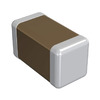 GCM1555C1H330JA16D
GCM1555C1H330JA16D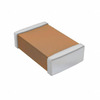 CL31B105KCHSNNE
CL31B105KCHSNNE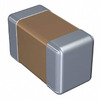 C1608CH2A152K080AA
C1608CH2A152K080AA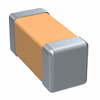 C0402CH1C180K020BC
C0402CH1C180K020BC C1005X6S1A334K050BC
C1005X6S1A334K050BC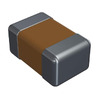 08055C821KAT4A
08055C821KAT4A GQM1875C2E5R6DB12D
GQM1875C2E5R6DB12D 1210ZC475KAT2A
1210ZC475KAT2A T494D106M025AT
T494D106M025AT MCP3424-E/SL
MCP3424-E/SL
- EP4CE22F17I7
- BD9883FV-E2
- AC0603FR-078K2L
- ERA-6AEB912V
- BSM500GA124D
- QM10KD1-12H
- KSA1156YS
- M74HC590RM13TR
- LM239J
- T491D107M016ZTZV10
- LM5117PMHX/NOPB
- FAN4860UMP5X
- THS4141CDGNR
- STPS80H100TV
- A8283SLBTR
- BTA212B-600B
- HD6412392F20
- HYB25L256160AC-7.5T/R
- ICS950402AFT
- K4D263238E-GC33
- LC272C2BT-VD1
- LFB212G45BA1C057
- M38239GCFP
- QT2032-AA7-1A2
- TMP87CP71F-6597
- CD3301RHHR
- M63802GP
- MSD3463LSA-0057
- SC901502DWR2
- G3MC-201P-5V
- X5083V8-1.8
- P3029FZQW
- PMB8875V1.1BG14
- X805867-001
- TC203G64AF-0001
- XC29009VH
- TPS22919QDCKRQ1
- 74HC7541DB
- 8D7-13F08SN